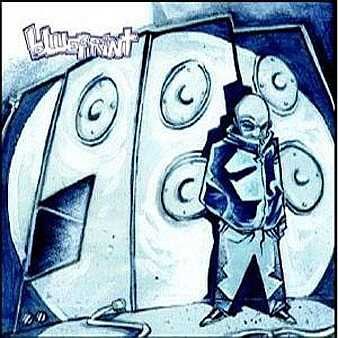On his first solo effort, Weightless Records
honcho Blueprint offers a modern ode to his
musical roots for the Rhymesayers-released album
1988. Capturing the epoch that spawned classic
artists such as A Tribe Called Quest, De La Soul
and Digital Underground (to name a few), and
inspired culture-chieftains such as Spike Lee and
John Singleton, 1988 is an exercise in
balancing influence with personal style and
artistic vision.
Once revolutionary, once makeshift, once the
voice of a scorned culture in America, hip-hop
has in recent years been the patsy of greedy
commercialization and has consequently become the
most popular tool in the white mans money
hustle. Through his socially conscious
temperament, Blueprint uses 1988 to
highlight the obstacles not only in mainstream
and underground music, but also in the cultures
they propagate. While it is, for the most part,
music with a purpose, 1988 often takes
time out to have fun, oddly enough offering such
politically incorrect tracks such as Big Girls
Need Love Too, and Wheres Your Girlfriend At?
Write it off to Blueprint being true to 1988, a
time where females were dealing with the
resistance of furthering their social
equality.
Catchy and well written, the real focal point on
1988 is Blueprints ever-growing
proficiency as an emcee. With each release,
Blueprint convinces more and more listeners that
he is the greatest emcee alive, underground or
otherwise. With a style as palatable as Nas and
intricate as AesopROCK, Blueprints real strength
is his ability to capture his beats perfectly
with a peerless and unrivaled flow. Depending on
how Commons upcoming album turns out, Blueprint
just might end up holding the crown of best
classic-styled MC around, and 1988 is his
proof.
1988s production is similar to
Blueprints work on Brother Alis Shadows on
the Sun album, yet even more so rooted in the
beat-box loving, loop riding style of classic-era
hip-hop producers like Erick Sermon and Marley
Marl. Building dusty loops over customary drum
breaks, 1988 finds quality in Blueprints
zestful knack for craftsmanship.
Typically only using a single break and two or
three other loops, Blueprint chops and arranges
his songs with the skill of a master-producer,
similar to Prince Paul or DJ Quick; and, of
course, in the spirit of hip-hop, is always ready
with a new idea.
With his modern-day version of roots rap, Ohios
Blueprint has become underground hip-hops most
valuable entity. Through flawed, 1988 is a
strong contender for best executed and most
important hip-hop album of 2005.

